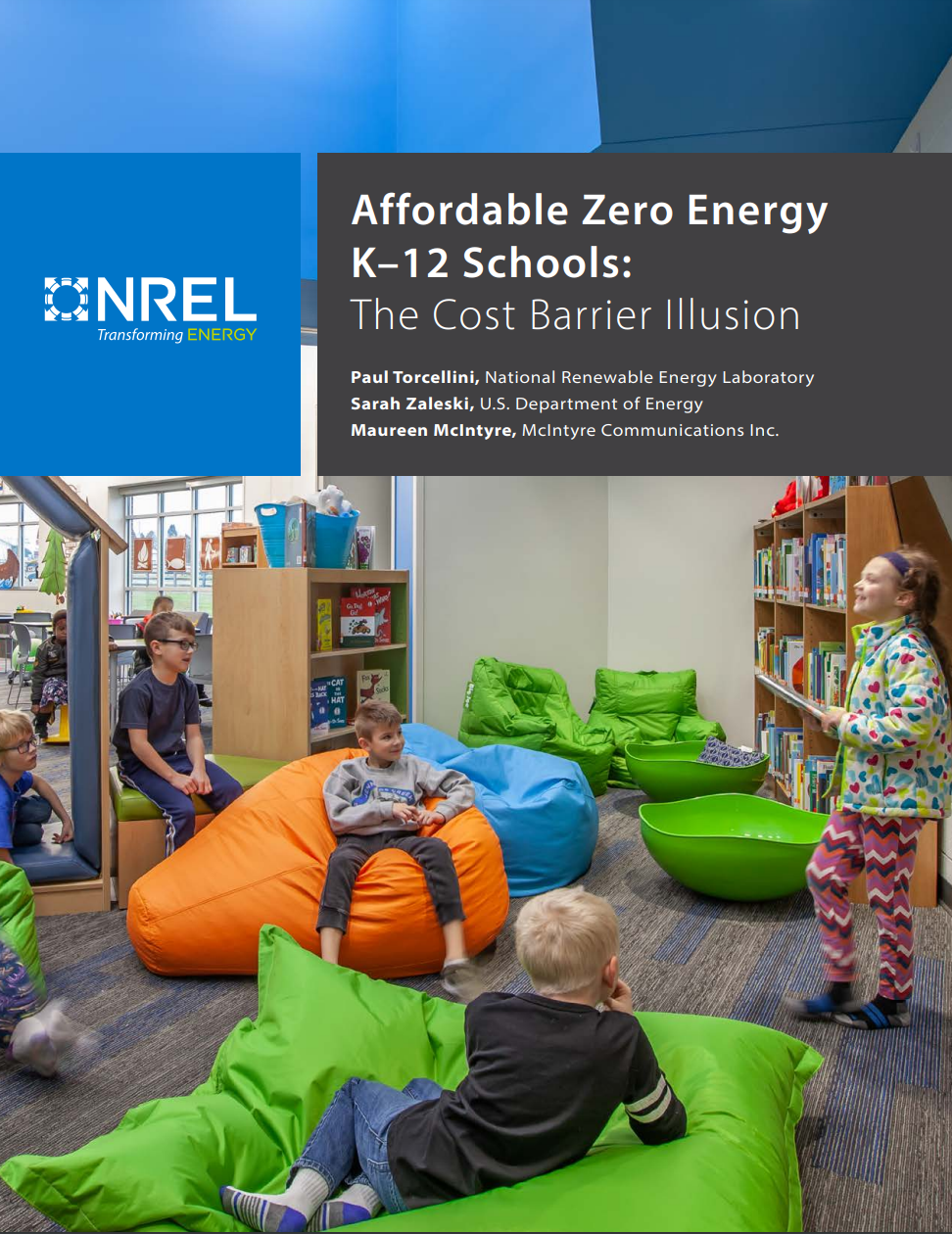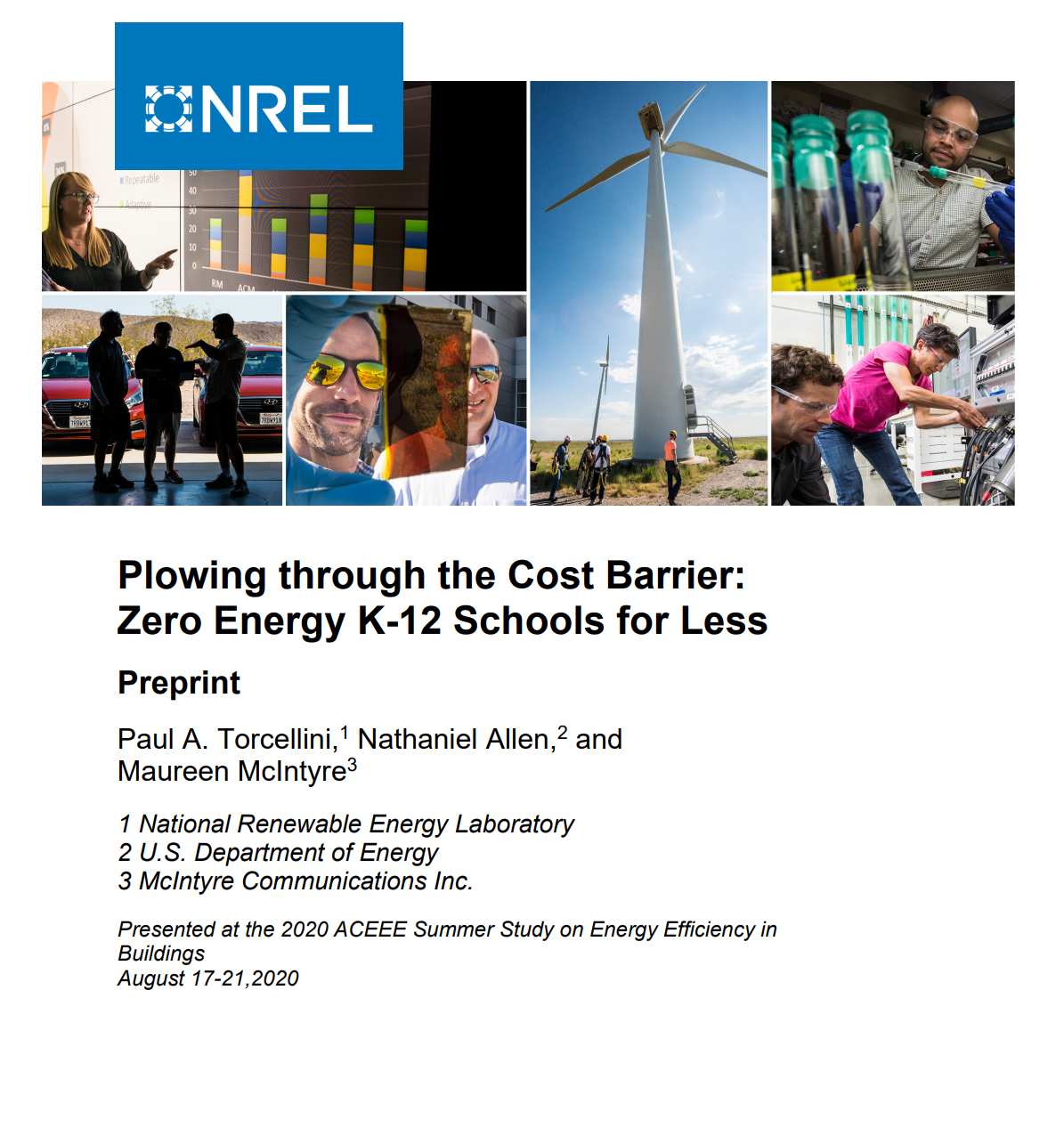Funding Barriers and Solutions
 Affordable Zero Energy K-12 Schools: The Cost Barrier Illusion
Affordable Zero Energy K-12 Schools: The Cost Barrier Illusion
This study dispels the myth that zero energy schools cost more. NREL examines 88 zero energy or zero energy ready schools across the United States built in the last 15 years. Their findings indicate that not only can zero energy schools be designed and built on conventional school budgets, but they can cost less. This can help overcome perceived cost barriers to efficient, healthy schools.
 Plowing through the Cost Barrier: Zero Energy K-12 Schools for Less
Plowing through the Cost Barrier: Zero Energy K-12 Schools for Less
There is a perception that zero energy K-12 schools cost more than conventional schools. Zero energy schools provide a number of unique benefits to school districts, students and staff, and communities. Among other things, a zero energy school requires far less energy to operate than a conventional school. The money saved on energy can often be used to enhance educational programs. But does the extra value come at a premium? Research findings indicate that not only can zero energy schools be designed and built on conventional school budgets, they can cost less.